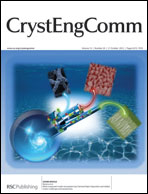Multi-nano-pipeline bundles with exterior diameter of about 80 nm and length of hundreds of nm for the bundles and interior diameter of 5 nm, wall-thickness of 3 nm and length of hundreds of nm for the nano-pipelines; nano-particle with the smallest diameter of about 3 nm; nano-tubules with interior diameter of 30 nm, wall-thickness of 8 nm and length of thousands of nm were obtained from single crystals 1, 2 and 3 by grinding and ultra-sonication, respectively. The single crystals 1, 2 and 3 were assembled by complex (NH3CH2CH2NH2)2 [WO2(O2C6H4)2](NH2CH2CH2NH2) (1), [NH3CH2CH(NH2)CH3]2[WO2(O2C6H4)2] (2), and (NH3CH2CH2CH2NH2)2[WO2(O2C6H4)2] (3), respectively. All of the complexes contain the same anion [WO2(O2C6H4)2]2−, however with different protonated diamine as anti-counter cations. The protonated ethylenediamine cations formed a ten-member-chain through hydrogen bonds linking [WO2(O2C6H4)2]2− in the ac plane into a quantum-lamellar motif, which constitutes multi-layered single crystal 1 though π–π interaction. The protonated 1,2-propanediamine cations formed a ten-member-ring connecting [WO2(O2C6H4)2]2− along the a, b and c axes into a quantum-spot motif, which constructed block crystal 2 by hydrogen bonds. The protonated 1,3-propanediamine formed a twelve-member-ring bonding [WO2(O2C6H4)2]2− in the bc plane into a quantum-lamellar motif, which built the multi-layered crystal 3 though π–π interaction. The morphologies and the scale of the nano-structures above were all associated with the quantum motifs of their respective crystals. Moreover, the nano-lamellas disassembled from crystals 1 and 3, similar to multi-layered graphite crystals, can disassemble into nano-lamellas which curl into nano-tubules for the saturation of valence bond in the two opposite terminal edges under special treatment. They also curl into nano-pipelines or nano-tubules after further grinding and ultra-sonication. Different from the crystal containing tungsten, however, the molybdenum multi-layered crystal isomorph disassembled into nano-ribbons.


 Please wait while we load your content...
Please wait while we load your content...